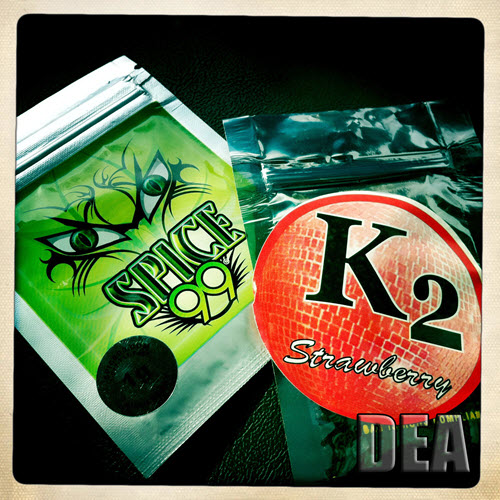They are referred to as “spice zombies” in the British tabloids. Users having “fake weed” overdoses are making the headlines in the US. Elsewhere, users are taking “legal highs” too far. Users are rushed to the emergency after they have collapsed or have fallen into a stupor. The numbers usually have a sharp upturn for a few days. So what kind of drug is causing this? It is synthetic cannabinoids, which are chemicals that affect the same brain receptors as cannabis. However, these drugs are more addictive and potent.
China is the main production centre, where the drugs are produced and shipped in powders, which are then sprayed onto dried plants and then smoked. In Britain, the name given to these drugs is Spice and as 20 Police Commissioners across the country state that this drug is one of the most dire public-health problems facing the country over the past decade. Use of the drug is spreading to nearly every city in the UK.
Use of Spice is rife in Britain’s jails, with the drug being smuggled in in various ways, including recently, being soaked into letters for prisoners or by being flown into the prison by drone.
What Makes Spice So Dangerous?
The unpredictability of the impact on the user is what makes spice so dangerous. This is a result of the chemical mixture’s rapid turnover. Synthetic cannabinoids are available in several hundred different kinds and the new ones are easy to make. Chinese authorities have banned the individual chemicals in spice; however, the companies that make the chemicals skirt the bans by altering the chemicals in the product. Even in the same batch, the potency could be very different because the spraying of the chemical could be uneven. Another mistake that resulted in a ten-fold spike in a spice batch that was sold in Manchester last year because there was a missing decimal in the mixing recipe. Because of these variations, the impact of spice could vary dramatically, which only makes the job of police, hospitals and paramedics extremely difficult. Some users display psychosis and paranoia after a hit of spice.
Coming Off Of Spice Is Not Easy
Furthermore, coming off a spice high is more difficult compared to coming off a high from other drugs. Spice addicts don’t see themselves as addicts and most of them think it isn’t as harmful as cannabis. The US, unlike Britain, hasn’t banned all synthetic cannabinoids since some are sold in legal cannabis stores as herbal incense. Outreach workers have to deal with another problem when helping the homeless. Those addicted to heroin usually have 4 – 5 hours of lucid thoughts a day, but with spice, the brain is constantly foggy since addicts tend to chain-smoke spice.
The Hidden Dangers of Spice
While Spice’s unpredictability makes it hazardous, there’s more to the story. Users often don’t realise they’re playing Russian roulette with their health. The drug can trigger severe anxiety, paranoia, and even psychotic episodes. It’s not just your mind at risk – Spice can wreak havoc on your body too. Heart palpitations, seizures, and kidney damage are just a few potential side effects. What’s more, the long-term impacts remain a mystery. We’re only scratching the surface of understanding how these synthetic chemicals affect the brain over time. It’s a gamble that’s simply not worth taking.
Unlike methadone for heroin users, to date, there isn’t a single effective substitute for Spice. Treatment focuses on withdrawal symptoms and concentrates on using medication to ease the pain, psychosis and stomach issues.
At this time, spice isn’t as prevalent as other street drugs. In Britain, from 2017-18, just 0.4% of 16 to 59-year-olds took drugs that were in the same category as spice. In the US, 36% of high-school students took cannabis, while 7% tried spice. Spice has become very prevalent among the homeless in British and American cities. Many of the homeless population might already be addicted to drugs and will try a cheaper drug that makes two days feel like two hours.
Spice Is Less Likely To Be Detected By A Drug Test
Spice is also increasing in popularity with people whose freedom or careers are dependent on passing a drug-screening test. Typical drug tests do not identify synthetic cannabinoids; therefore, those in prison, on parole or in the army who were users of heroin, cocaine or cannabis would make the switch to spice to conceal their addiction. However this is a risky strategy as just only recently drug tests for Spice have started to appear on the market as single drug tests for Spice or multi panel drug test kits that include Spice as a test parameter.
Photo by DEA
Zoom Testing is a leading UK drug testing company and a supplier of Drug Test Kits.





